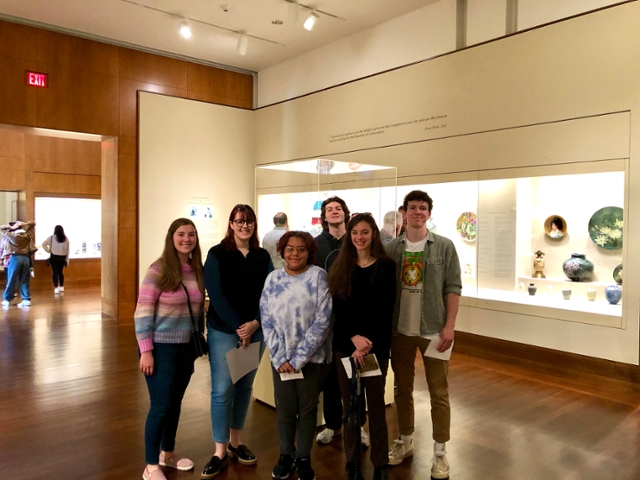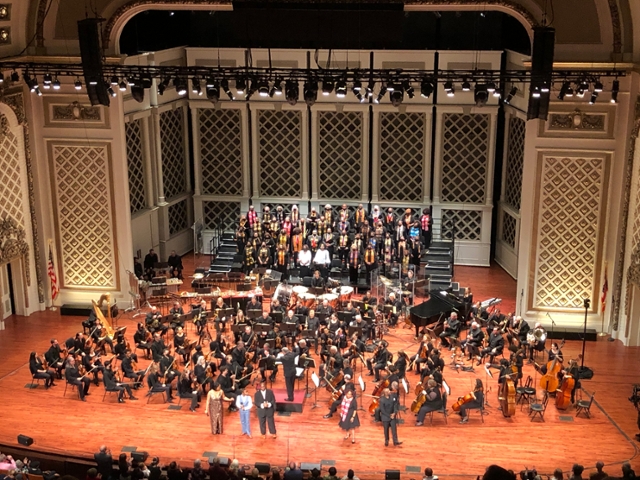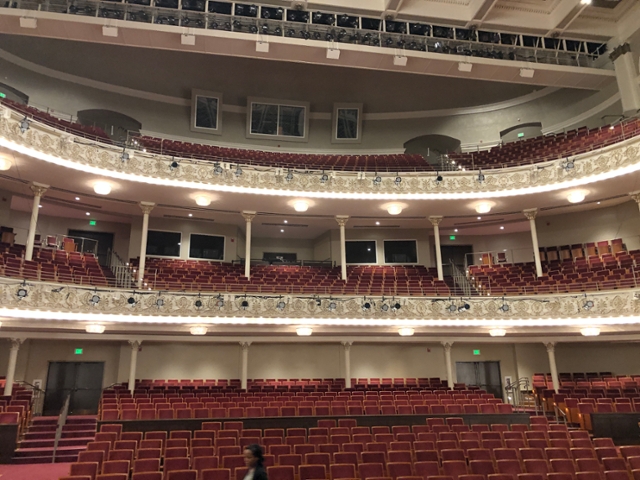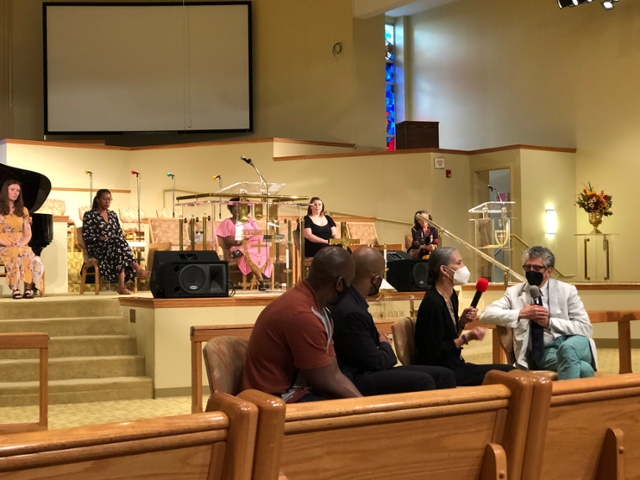Arts Administration

What is Arts Administration?
Arts Administration, also sometimes called arts or cultural management, has historically been an occupational field responsible for the governance, management and sustainability of not-for-profit arts and cultural organizations. Some of these organizations include but are not limited to art museums and galleries, history museums and societies, cultural heritage associations, performing arts halls, presenting arts companies, community arts and cultural centers, state arts associations, and public arts-granting foundations.
What is the mission of the Arts Administration Program at Xavier?
The mission of the Xavier Arts Administration Program (XAAP) minor is to teach students how to carry out administrative responsibilities in diverse arts and cultural organizations. The XAAP minor consists of five three-credit hour classes, totaling fifteen credit hours to complete. No prerequisite courses are required. Students with a XAAP minor learn skills in not-for-profit administration, arts and cultural programming, oral communication, diversity, equity, inclusion, accessibility (DEIA) concepts, personal and operations budgeting, not-for-profit financial planning, fundraising and grant writing, arts marketing and digital ticketing systems.
What type of jobs can I get with this education?
Arts administrators are in demand! Here is a list of sample employers and careers in the arts administration field:
Explore current job opportunities in arts administration through ArtsAdminJobs.
Some unique aspects of our program:
Students who take ARTS 330: Marketing and Ticketing will graduate with a professional certification in the Tessitura ticketing and customer relationship management (CRM) system. The Tessitura course Introduction to Ticketing is integrated into this course. Tessitura is the leading Ticketing and CRM software system within over 650 not-for-profit arts and cultural organizations with budgets over 1 million worldwide.
The program is also approved as an institutional member of the Association for Arts Administration Educators.
Educational Partners
Association for Arts Adminsitration Educators (AAAE)
Ensemble Theater Company of Cincinnati
Please see a list of our new arts administration course descriptions below:
Note: Courses can be taken in any sequence. However, we encourage students to take ARTS 130 first before taking other courses.

ARTS 130: Intro to Arts Administration
This is a diversity flagged face-to-face lecture-based course that introduces students to the historical development of the arts administration field, best practices for managing not-for-profit arts organizations, and contemporary issues. To facilitate student learning, students will visit local not-for-profit arts organizations and consider perspectives from diverse arts administrators in the field.
At the end of this course, students will be able to:
- Identify best practices in the field of arts administration
- Compare contemporary careers and job opportunities in the field
- Recognize the effect of changing demographics and cultural shifts in communities served by not-for-profit arts organizations
- Compare proposed solutions to contemporary challenges in the field
- Analyze diversity, equity, inclusion and accessibility (DEIA) issues in the field
- Distinguish between various organizational structures in the field

ARTS 230: Financial Planning in the Arts
This is a QR flagged course that helps students develop the ability to analyze, interpret and utilize financial data to make informed financial decisions for diverse arts organizations.
At the end of this course, students will be able to:
- Create a personal, a group project, and an operations budget
- Conduct a what-if analysis
- Monitor budget variances overtime
- Analyze simple financial statements (i.e., balance sheet, income/P&L statement, cash flow statement)
- List the IRS tax requirements for self-employed workers, partnerships and not-for-profit organizations
- Interpret the financial condition of a not-for-profit arts organization using financial ratios

ARTS 330: Arts Marketing & Ticketing
This course helps students develop knowledge and skills useful for building arts audiences and communicating the value of arts-based experiences to diverse stakeholders and arts consumers. In addition, students develop foundational knowledge and basic skills for operating and managing industry standard ticketing software for performing arts organizations.
At the end of this course, students will be able to:
- Identify basic marketing principles (people, product, place, price, promotion)
- Identify current motivations and barriers to arts attendance and participation
- Identify inclusive diversity marketing strategies
- Compare and contrast digital marketing strategies
- Create a marketing plan for an arts event
On the ticketing side, students will be able to:
- Identify, edit and update constituent records in Tessitura
- Change ticketing structures and add product information to production elements in Tessitura
- Add ticket packages in Tessitura
- Locate and analyze ticket orders using order search in Tessitura
- Process ticket sales, refunds and exchanges in Tessitura

ARTS 331: Fundraising for Arts Organizations
This course helps students develop foundational knowledge and skills useful for fundraising and development planning for not-for-profit arts organizations.
At the end of this course, students will be able to:
- Describe basic fundraising practices used to support not-for-profit organizations
- Conduct prospect research on individuals, social groups, corporations and foundations
- Construct common fundraising materials and solicitation pieces
- Create a fundraising plan for a given arts organization

ORAL COMM 101: Oral Communication
This course is designed to enhance the student’s understanding of the principles and practices of oral communication through preparation, delivery, and constructive feedback to and from others. To those ends, by the end of the course, students will be able to:
- Analyze an audience and adapt their message to the audience
- Clarify ideas and organize information effectively
- Present a supported opinion providing good reason for others to accept a position
- Listen actively and effectively critique the messages of others
- Deliver messages using effective verbal and nonverbal skills along with effective use of visual media
Course availability can be found by searching for the course in the university course catalog. For answers to questions about the field of arts administration, or specific arts administration courses, please email Dr. Jason C. White at whitej48@xavier.edu.